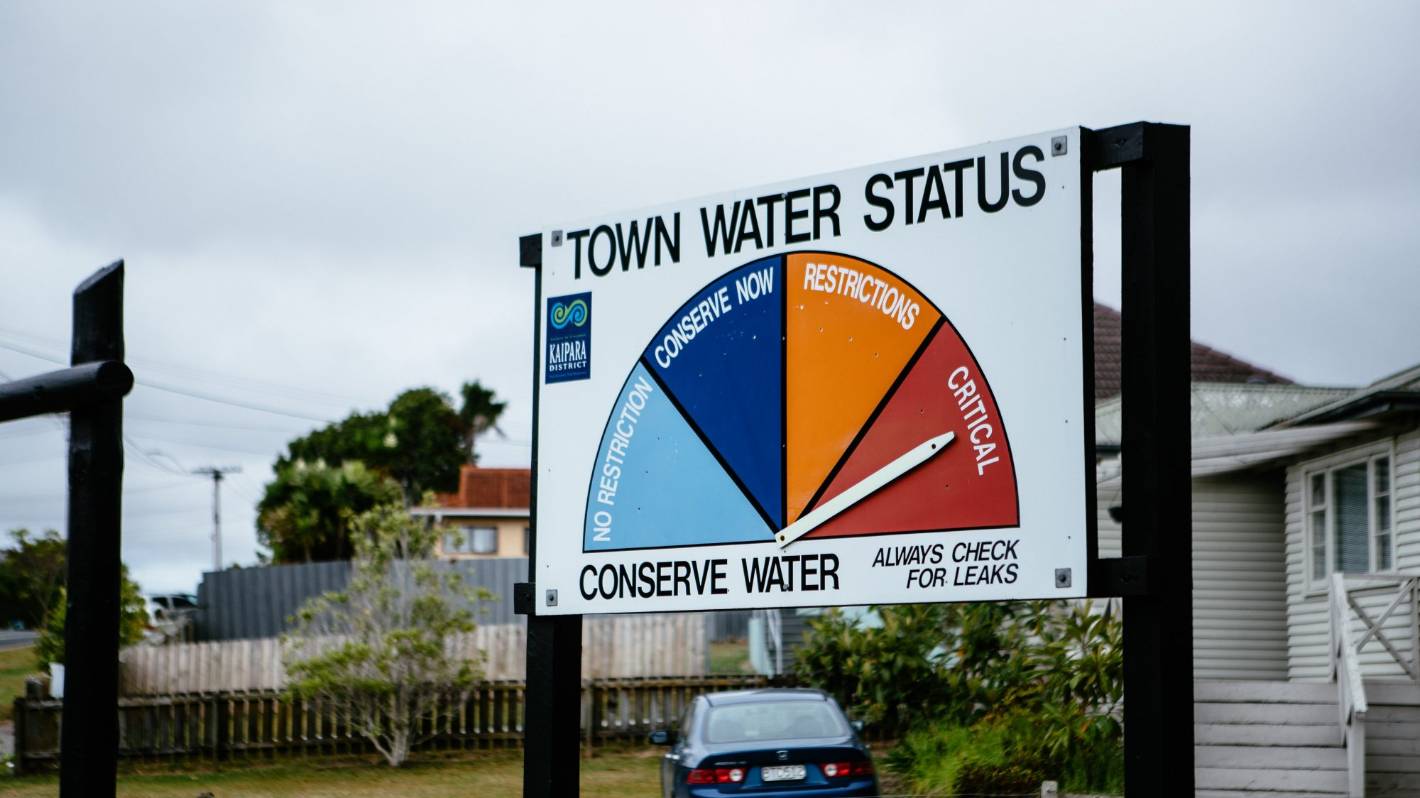Abigail Dougherty/Stuff
In early 2020, Northland towns including Kaitāia, Kaikohe and Dargaville faced the toughest water restrictions possible due to a one-in-80-year drought. (File photo)
A $15.3 million project to provide “critical” extra drinking water to Northland’s Kaitāia is not yet on stream, despite being nearly two years overdue and with a drought looming.
The Far North District Council began the Sweetwater bore project in 2020 after a severe drought put Kaitāia at risk of running dry and having to follow the toughest water restrictions available.
The project was to provide water from Aupouri Aquifer through two bores at Sweetwater and a 13.5km pipeline, complementing the town’s main water source, the Awanui River, which drops to very low levels in drought.
So critical was the project, the council did work on land owned by one company, Elbury Holdings, without the landowner’s permission.
The project was initially expected to be up and running by the 2021/22 summer and the pipeline was “officially opened” by then-mayor John Carter in June 2022.
But, while the infrastructure and pipeline was finished in September 2022, the water is still not available to be used by the town due to a host of problems.
Far North District Council/Supplied
In February 2020, Kaitāia’s main water source, the Awanui River, dropped well below normal levels, as indicated by Far North Waters treatment operator Regan Jones. The Sweetwater connection was designed to complement this water source.
A recent report to the council’s Te Miromiro – Assurance, Risk and Finance Committee revealed a plan to commission the water pipe was never put in place and the operations team, which treats the water, was only brought in at the last minute, when the problems were discovered.
The problems include the bore water containing silica, or fine sand, concerns about the aquifer running low as it is used by orchardists and farmers, pumps failing and the bores continually needing flushing.
This is on top of water issues already experienced by Kaitāia residents, with the tap water smelling and tasting strongly of chlorine, sometimes causing milk to curdle.
Council chief executive Guy Holroyd told Stuff the council has instructed its three waters alliance partner, Far North Waters, to introduce the bore water to the Kaitāia treatment plant at intervals only.
Denise Piper/Stuff
Kelly Smith shows how his tap water makes milk in a cup of coffee curdle, while rainwater produces a drinkable cup of coffee.
“This will both further inform us on the production capacity of the water bores and ensure we can continue to effectively treat raw water taken from the Awanui River, our primary source.”
But Holroyd admitted the work is a priority, with weather experts predicting a dry summer.
“The goal is to bring the Kaitāia water project online before the end of the year.”
With an El Niño weather pattern in place, NIWA is predicting October to December in Northland to be drier than normal, and average or above average temperatures.
The potential for drought and low river levels is already being monitored by Northland civil defence emergency management team, said chair and Far North deputy mayor Kelly Stratford.
NCDEM
The New Zealand Defence Force was called into Kaitāia in February 2020 to help distribute water. Deputy mayor Kelly Stratford says the council is aware of the potential for another drought and the impacts water restrictions will have.
“We’re very aware of the potential for drought and the dire impacts that water restrictions would have, again, on our businesses and residents.”
But she was confident there would be contingencies for Kaitāia’s water if Sweetwater was not running by summer.
“If we have a drought and the Awanui River drops, we have got support from other bore owners who have informally said they would assist council, as they have done in previous years,” she said.
“In the last drought there was nothing.”
Stratford admitted Kaitāia ratepayers may feel like they are not getting value for money with the project but said there were risks involved in drilling bores through a sand base.
The council and ratepayers are feeling the burden of infrastructure not being addressed a decade earlier, during the reign of mayor Wayne Brown, Stratford said.
In 2013, the council started a then-$6m project to access water from Aupōuri Aquifer at Sweetwater. However, the project fell over, with a 2015 Serious Fraud Office investigation finding councillors and staff did not follow proper processes in the spending of public money.



